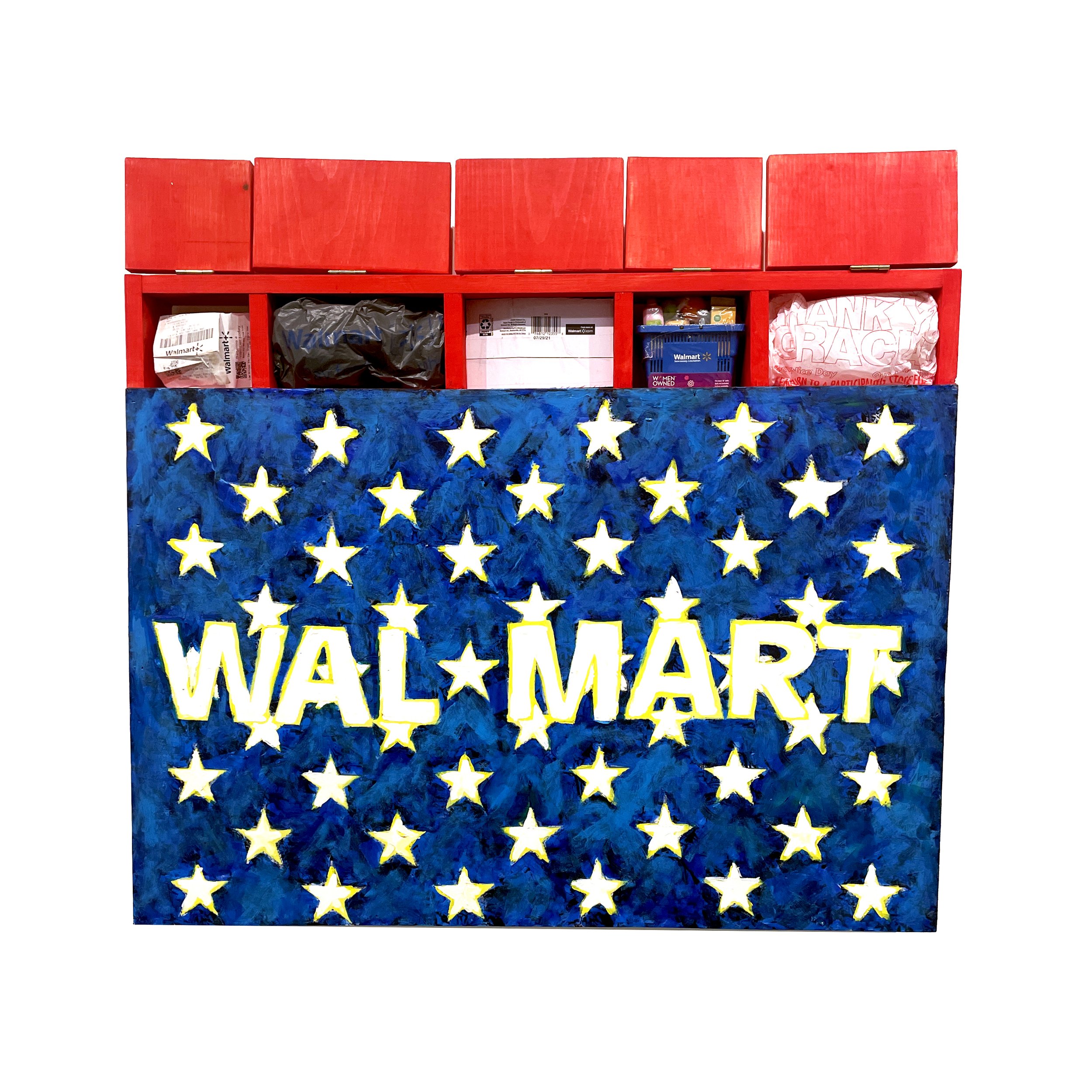Fantasy vs. Reality: Exploring the Transition from Childhood to Adulthood in Erykah Townsend
We had the opportunity to interview Erykah Townsend, a conceptual artist from Cleveland, Ohio, whose work merges pop culture and societal critique. Erykah explores the intersections of the imaginary and the real, using humor and familiar cultural icons to explore themes such as consumerism, western culture, and the stark transitions in life. Her 2020 BFA thesis collection, "6:00 p.m.," reflects on the abrupt shift from the innocence of PBS Kids programming to the realities of adulthood, capturing this transition with surreal depictions and clever pop culture references. Today, Erykah shares insights into her artistic journey, the materials that bring her visions to life, and the impact of recent global events on her creative process.
1. Tell us briefly who you are? What themes does your work address?
My name is Erykah Townsend and I'm a conceptual artist from Cleveland, Ohio. I use pop culture as a medium itself - exploring the spaces it fills in our lives and to assess how the real mirrors the imaginary. Through humorous narratives, I reference art history and critique consumerism and western culture, using characters, cultural icons, and objects as allegories for my criticism. My work from my 2020 BFA thesis from the Cleveland Institute of Art, entitled "6:00 p.m." is is a nod to the early 2000s, when PBS Kids would end their programming for the day and switch over to adult content on weekdays, exposing children of all social classes to vastly different worlds. This collection explores the abrupt shift from innocent PBS Kids programming to the abrupt realities of adulthood, using surreal depictions and clever pop culture references to address complex themes such as class, death, and time. One notable piece from a collection called , "It Was a Beautiful Day in the Neighborhood," captures a still from the first episode of Mister Rogers. The playful and childlike material of pom-poms creates a pointillism effect that symbolizes how although Mister Rogers' physical presence may have diminished, his lasting impact will always be present.
2. Is your current work representative of your oeuvre? How does it fit into your larger body of work?
My current art practice draws heavy inspiration from pop culture and conceptual ideas. Furthermore, it showcases a diverse range of materials that I enjoy working with in my art practice.
3. As an artist, what are your essential materials and/or tools for building a new world?
For me, the essential materials/tools for building a new world are books or any form of research. I am passionate about learning new things and applying them to my work, which makes me more aware of the world around me. In my art practice, about 70% of my time is spent on researching and brainstorming, while the remaining 30% is dedicated to creating the physical form of my ideas. I always incorporate a metaphor, phrase, slogan, or idiom into my work, as it helps to merge my conceptual ideas with the physical form of my art.
4. Did any books, music, film, news, or other art inform your work in the Ohio Women to Watch exhibition?
My favorite shows from PBS Kids from the early 2000s, such as The Big Comfy Couch, Caillou, and Barney, have influenced my work in this exhibition. The idea of being inspired by the transition of the PBS Kids channel turning to PBS at 6 p.m. came from my own childhood experience. I remember the channel switching after Clifford the Big Red Dog and to the civil rights movement. It was very disruptive. I felt like reality hit me –which makes me so interested in history and media today.
5. How have the events of the past several years—the global pandemic, increased advocacy for social reform, and striking political division—changed or challenged your practice?
I understand how the increasing prevalence of identity politics has presented challenges for my artistic practice. In the art world, I feel the pressure to create art centered around my identity to address themes of oppression. I believe that many galleries and museums are keen to exhibit artists from diverse backgrounds who engage with identity politics to demonstrate inclusivity, but it comes across as inauthentic many times. While I appreciate the importance of showcasing such work, it's concerning when it's assumed that artists should create within these themes solely because of their identity. It's important for artists to have the freedom to choose their subjects without feeling overlooked.
i6. If you could travel to any time, past or future, where would you go? Why?
I'd love to travel back to the DADA art movement, as I believe it's when the question "what is art?" was truly born, and when the diverse nature of our now contemporary art was established. I also feel that my own art practice is already inspired by that period and that it paved the way for movements like Pop Art.
Where you can see more of this artist’s work:
You can see other examples of Townsend’s work on her website or instagram @milkcratestudio
Her work will be exhibited at The Southern Ohio Museum and Cultural Center, Portsmouth, July 11-September 7, 2024.





